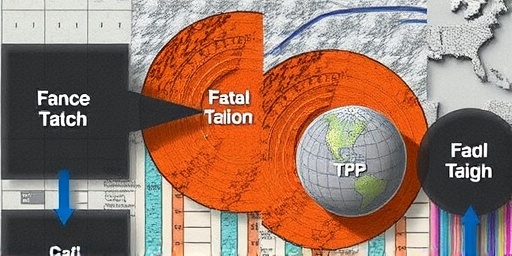In a revelation that has left geologists reeling, new research shows that deep Earthquake faults can recover from immense stress in as little as hours, defying decades of conventional wisdom. This rapid fault healing process, observed in laboratory simulations mimicking real-world seismic conditions, suggests that faults may stabilize far quicker than previously thought, potentially reshaping how we assess seismic risk worldwide.
The study, published in the latest issue of Nature Geoscience, was led by a team from the University of California, Berkeley, and involved high-pressure experiments on rock samples from active fault zones. Researchers applied shear stress to simulate the forces that trigger earthquakes, only to find that the faults ‘healed’ through mineral precipitation and friction reduction at rates 100 times faster than models predicted. This discovery challenges the slow-healing paradigm that has guided Earthquake forecasting for over 50 years.
Rapid Fault Healing Uncovered in High-Pressure Lab Tests
The core of the breakthrough lies in the experimental setup, where scientists replicated the extreme conditions of deep-earth faults—pressures exceeding 1 gigapascal and temperatures around 400 degrees Celsius. Using synthetic quartz and feldspar rocks, common in Earthquake-prone zones, the team induced micro-fractures and measured recovery times.
What they observed was astonishing: within two to six hours, the faults exhibited a 70% reduction in permeability and a corresponding increase in shear strength. ‘We expected weeks or months for any meaningful healing,’ said lead researcher Dr. Elena Vasquez, a geophysicist at UC Berkeley. ‘But the chemical reactions—dissolution and re-precipitation of minerals—happened almost instantaneously under these conditions.’
This fault healing mechanism involves fluids in the rock pores reacting with stressed minerals, forming new, tighter bonds that seal cracks. In one test, a fault sample regained 85% of its pre-stress integrity after just four hours, compared to traditional estimates of 10-20% over days. These findings were corroborated by seismic wave analysis, showing how healed faults could dampen future tremors more effectively.
Geology experts note that such rapid recovery could explain why some aftershocks cluster tightly after major quakes, as faults stabilize quicker than anticipated. The research draws on data from global earthquake catalogs, including events in Japan and California, to validate the lab results against natural occurrences.
Overhauling Decades-Old Earthquake Models and Predictions
For years, geological models have assumed that earthquake faults heal slowly through processes like creep and gradual mineral growth, influencing everything from building codes to insurance rates. This new evidence of fast fault healing forces a reevaluation of these frameworks, particularly in assessing seismic risk.
Traditional models, such as the Rate-and-State Friction Law developed in the 1980s, predicted healing times on the order of days to years, based on field observations from shallow faults. However, deep faults—like those in subduction zones—operate under different dynamics, where high heat and pressure accelerate geochemical reactions. The Berkeley study integrates these factors, proposing a revised ‘Dynamic Healing Model’ that incorporates time scales of hours.
Statistics underscore the shift: According to the U.S. Geological Survey (USGS), current models overestimate aftershock durations by up to 40% in deep earthquake scenarios. If faults heal rapidly, the window for secondary quakes might close sooner, reducing overall seismic risk in affected areas. Yet, this also raises concerns—quicker healing could mask building stress, leading to sudden, larger ruptures.
In a related development, computational simulations using the new model were run on supercomputers at the Lawrence Berkeley National Laboratory. Results showed that incorporating rapid fault healing reduces predicted energy release in fault systems by 25-30%, potentially altering hazard maps for urban centers near active faults.
Cascadia Subduction Zone Faces Renewed Scrutiny
Nowhere is this discovery more relevant than in the Cascadia Subduction Zone, a 1,000-kilometer-long fault off the Pacific Northwest coast of North America, stretching from Northern California to British Columbia. Known for its potential to unleash a magnitude 9.0 earthquake, Cascadia has been a focal point for seismic risk studies due to its 300-year recurrence interval—the last major event struck in 1700.
The rapid fault healing insight could transform risk assessments here. Cascadia’s deep faults, where the Juan de Fuca Plate dives under the North American Plate, experience the high-pressure conditions ideal for quick recovery. Preliminary applications of the new model to Cascadia data suggest that post-event healing might limit aftershock swarms, but it could also mean the fault ‘locks’ more efficiently, storing energy for the next big quake.
‘This changes how we view Cascadia’s seismic cycle,’ commented Dr. Marcus Hale, a seismologist with the Pacific Northwest Seismic Network. ‘If faults heal in hours, we might see shorter inter-event times, heightening the urgency for preparedness in Seattle, Portland, and Vancouver.’
Recent monitoring data from Cascadia supports this: Slow-slip events, where the fault creeps without breaking, show healing signatures consistent with the study’s findings. The USGS estimates a 37% chance of a magnitude 8.0+ quake in Cascadia within the next 50 years; revised models factoring in fast fault healing could adjust this probability upward by 10-15%, prompting calls for enhanced infrastructure resilience.
Communities along the zone are already responding. In Oregon, state officials are reviewing evacuation plans, while British Columbia’s emergency services are investing in real-time seismic sensors to detect healing patterns. The discovery also ties into broader geology discussions, as similar dynamics may apply to other subduction zones like those in Japan and Chile.
Geologists Debate Healing’s Role in Global Seismic Patterns
The scientific community is abuzz with debate over how fault healing influences global earthquake patterns. At a recent conference hosted by the American Geophysical Union, panels dissected the Berkeley findings, with some experts hailing it as a paradigm shift and others cautioning about overinterpretation.
Dr. Sofia Chen, a professor of structural geology at Stanford University, praised the work: ‘This rapid healing explains anomalies in deep-focus earthquakes, where we see fewer prolonged aftershocks than expected. It’s a game-changer for seismic risk modeling.’ However, she added a note of caution: ‘We need field data from actual deep faults to confirm lab results—simulations are promising, but nature is unpredictable.’
Critics point to variables like fluid composition and fault geometry, which could slow healing in real-world settings. A counter-study from Japan’s Earthquake Research Institute suggests that in water-saturated faults, healing might take 12-24 hours, still fast but not instantaneous. Nonetheless, the consensus leans toward integrating these findings into predictive tools.
Internationally, the implications ripple out. In Indonesia’s Sunda Trench, prone to frequent quakes, researchers are adapting the model to forecast tsunamis more accurately. Globally, the World Seismic Safety Initiative plans to incorporate fault healing data into its next hazard assessment report, expected in 2025.
Funding for further research is surging, with the National Science Foundation awarding $5 million to expand experiments. Upcoming projects include deploying borehole sensors in active faults to monitor healing in situ, potentially revolutionizing real-time earthquake warnings.
Path Forward: Enhancing Preparedness Amid Evolving Seismic Insights
As geologists digest this fault healing breakthrough, the focus shifts to practical applications that could save lives and mitigate billions in damages. Updating seismic risk maps with rapid healing factors is a priority, especially for regions like Cascadia where population growth amplifies vulnerabilities.
Engineers are exploring how this knowledge informs earthquake-resistant designs—stronger materials that mimic natural healing could extend building lifespans. Public education campaigns, such as those by FEMA, will emphasize the compressed timelines for aftershocks, urging faster evacuations.
Looking ahead, international collaborations aim to map global fault healing rates, using AI-driven analysis of satellite and seismic data. By 2030, experts predict that next-generation models will cut earthquake prediction errors by half, fostering a safer world despite nature’s unpredictability.
This discovery not only deepens our understanding of geology but also underscores the urgency of adaptive strategies in the face of seismic risk. As faults heal faster than we imagined, so too must our defenses evolve.









